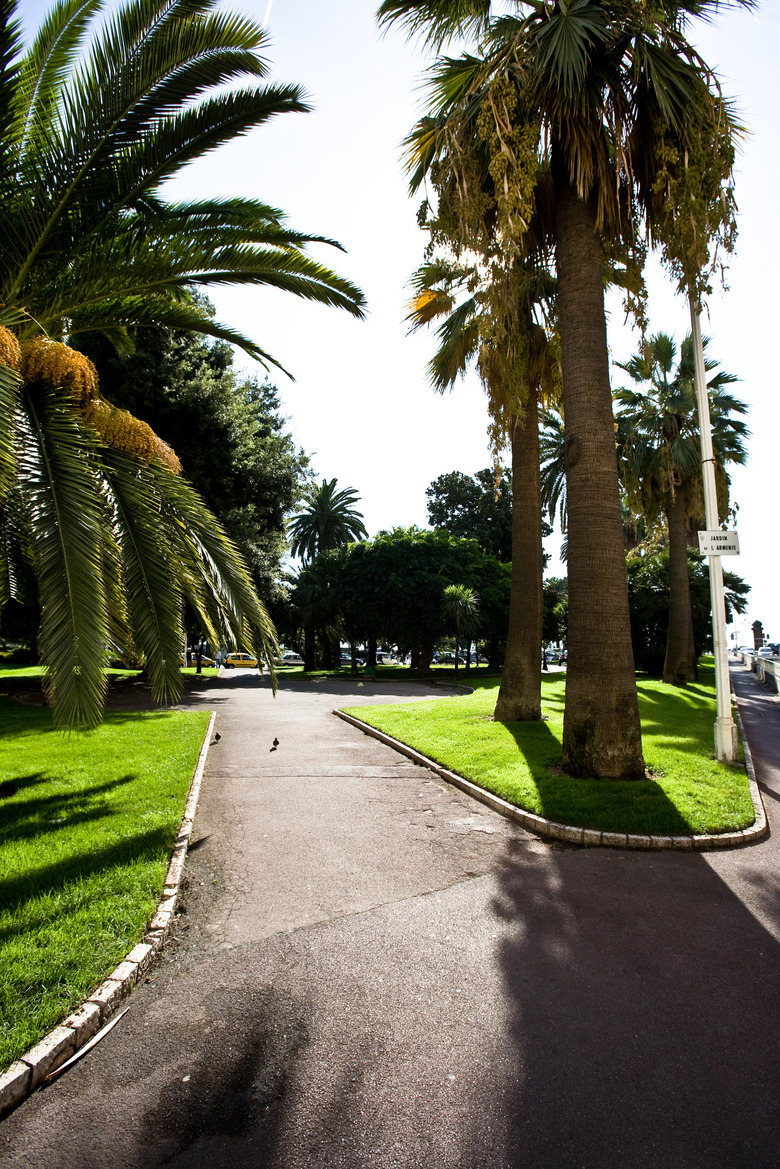Poisonous Palm Plants
Palm trees (Arecaceae spp.) have distinct foliage that makes them attractive indoor and outdoor plants. Many gardeners add palm trees to their landscaping to make their outdoor areas look like a tropical oasis. The sweeping foliage provides shade, vertical landscape elements and color; some palm varieties feature berrylike seed-pod clusters. But precautions may be called for when it comes to poisonous palm plant varieties that present a danger to people, pets and native wildlife.
Step 1
The sago palm (Cycas revoluta), a landscaping staple in U.S. Department of Agriculture plant hardiness zones 8 to 10, has glossy evergreen leaves. It may be used as a houseplant as well as outdoors. But ingesting the seeds or leaves may cause diarrhea, vomiting, headaches, dizziness and even seizures. The sago is only poisonous if massive quantities are ingested. Animals will begin to exhibit signs of sago poisoning within 12 hours of eating toxic plant parts. One of the indicators is excessive bleeding from orifices; seek immediate medical assistance.
Step 2
Formosa Palm
Step 1
The formosa palm (Arenga engleri) is a small tree variety growing in USDA plant hardiness zones 8b to 11. It's maximum height is only 10 feet, with a trunk no larger than 6 inches around, although the leaf canopy may spread as wide as 16 feet across. Formosa palm leaves, dark olive in color, grow in a slightly spiraling or twisting shape, each leaflet 5 to 8 inches long. It grows best in moist environments with plenty of sunlight. The fruits it produces are toxic when touched. Even the outer skin of the fruit may cause a rash if it comes into contact with bare skin. Always wear gloves when pruning or tending to avoid this toxic reaction.
Step 2
- The sago palm (Cycas revoluta), a landscaping staple in U.S. Department of Agriculture plant hardiness zones 8 to 10, has glossy evergreen leaves.
Cardboard Palm
Step 1
Cardboard palm (Zamia furfuracea) is toxic to animals, causing bruising, liver failure, vomiting and potential death. The tree is a common addition to landscaping because it is easy to grow, drought-tolerant and may be easily transferred indoors. The USDA 9-to-11 zone perennial is an ancient plant that's been part of the world since the age of dinosaurs. The leaves grow in a rosette pattern, each reaching 3 to 4 feet in length. It's the bright red seeds that grow inside the cones that are poisonous. Pick fallen cones off the ground to prevent harm to children, pets and wildlife.
